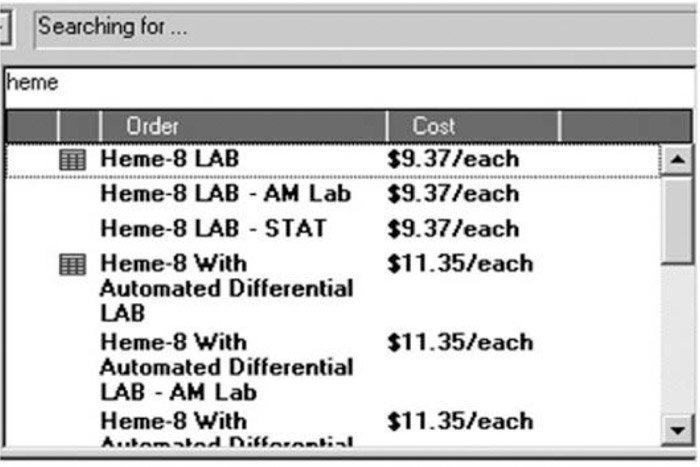Background:
Hospital care consumes a large percentage of U.S. health care costs, yet providers practicing in the hospital are often unaware of the actual costs of the diagnostic tests they order. We hypothesized that displaying the actual cost of the diagnostic test at the time of order entry would enhance provider awareness that their orders consume resources. This might lead them to order fewer tests, decreasing the total expenses incurred.
Methods:
Using data from fiscal year 2007 at our hospital, we compiled a list of the 35 laboratory tests that were most frequently ordered throughout the hospital and the 35 that were most expensive. To be included, the most expensive tests needed to be ordered at least 50 times. We randomly assigned each diagnostic test to be an “active” test or a control test. For all tests, we determined the cost, utilizing FY 2008 Medicare allowable cost rather than the inflated hospital charge. During a 6‐month baseline period, November 10 2008–May 9, 2009, we did not display any cost data. During a 6‐month intervention period, November 10,, 2009–May 9, 2010, we displayed only the cost of the “active” tests to ordering providers via the computerized provider order entry system. Our main outcome measure was the change in total cost (intervention period minus control period) at the test level (e.g., the cost of all Heme‐8s ordered). The Student t test was used to assess statistical significance. The institutional review board waived the requirement for informed consent, and providers were not routinely informed why the price data were displayed.
Results:
For the 33 active tests, the mean decrease in costs over the 6 month intervention period was $15,647 per test ($516,336 total for all 33 active tests combined) relative to the control period, a 10.5% cost reduction from baseline. For the 33 control tests, the mean decrease in total costs was $242 per test ($7991 total for all 33 control tests combined), a 0.2% cost reduction from baseline. This difference was statistically significant (P = 0.035).
Conclusions:
This randomized controlled trial suggests that simply showing providers the cost of some diagnostic tests at the time of order entry can affect behavior. Although this finding may be a function of culture, display format, and provider incentives, that there were no direct financial incentives (at the provider level) at our institution for containing costs suggests that physicians may be receptive to cost‐containment initiatives even when there is no direct incentive. It is not clear if ordering behavior will change permanently, and the overall effect of displaying the costs of all laboratory tests, rather than a select few, remains unknown.
Disclosures:
L. Feldman ‐ none; D. Brotman ‐ none; D. Thiemann ‐ none

